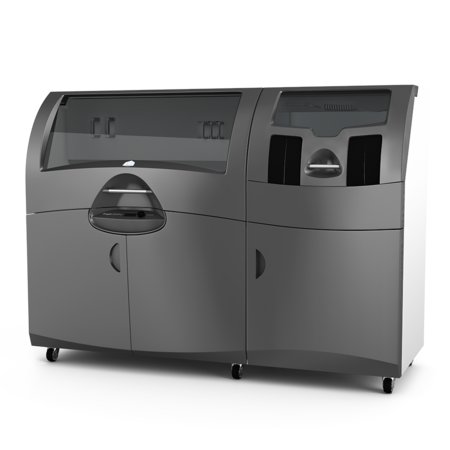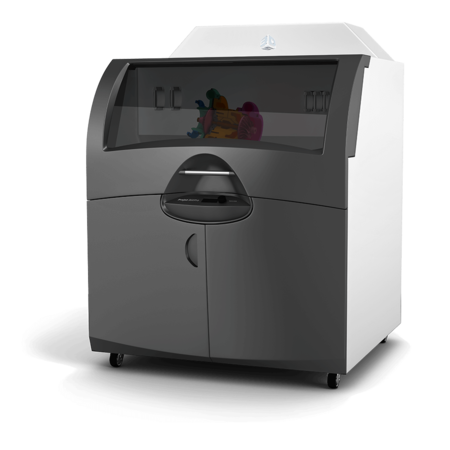Challenge
Access to High Tech Equipment Essential to Design Training
Solution
Public-Private Partnership
Lacking a stockpile of cash for new technology, Weirich creatively sewed some budget money together with financing help from Jay Plastics, a nearby auto industry parts supplier. In return for the financial support, Weirich's students print out prototypes for Jay Plastics in support of its headlight parts contract for the Ford F150. In addition to bringing state-of-the-art prototyping technology to Weirich's students, 3D printing has given them invaluable experience dealing with business and industry.
Results
Dynamic Learning Across Multiple Departments
Ontario High students can now take the 3D designs they've developed in their Rhino™ CAD software and hold the 3D physical prototypes in their hands a couple of short hours later. Both the students and Jay Plastics are maximizing the unique color potential of 3D System's Color Jet 3D printer.
Access to 3D printing is giving Ontario students experience in the entire product design cycle, from concept to production, without leaving the classroom. "Students get an idea, sketch it out, develop it in Rhino, animate it, print it, and then hold it in their hands," says Weirich. "When they hold it in their hands, they're closing the loop, which really brings the value of the exercise home. Until then, it's all conceptual, virtual and 2D. Completing the circle is important. It turns kids on."
The 3D printer in Weirich's classroom is pumping out models "twenty-four seven" he says. Students print mechanical designs, architectural models and art objects, including ducks, masks, cars, Big Ben, Mount Rushmore, the Lincoln Memorial and a sleek spaceship straight out of Star Wars. All of these are in bold color, which closes the loop on another level: students don't have to imagine their monochrome parts as colored or repaint them offline. They come straight out of the printer in high-fidelity 24-bit colors.
Weirich's design students are just one user group. Ontario High School's art department is using the printer to produce computer-designed sculptures, and industrial arts classes are using the printer to prototype furniture in miniature. Middle school students are just beginning to learn design with Rhino software, and the 3D printer will close the loop for those students as well, says Weirich.
Students' 3D printing work has gained widespread notice. Once the plans for the Ontario district's bus garage renovations and additions were approved, Weirich's classes took the design, made an architectural color 3D model of the site plans, added color 3D models of buses, parked them in garage bays, and transported these models to public meetings. This enabled the public to better visualize and understand the plan. "Our models are answering questions that a lot of people in the community may have, and they are easier to see compared to trying to read a blueprint," says Weirich.
The 3D printer is part of a well-equipped, comprehensive technology curriculum that Weirich says gives his students a leg up when they apply for admission and scholarships, and when they begin their college classes.
"Ontario High School design students are well-versed in areas of study that colleges and universities are just beginning to explore," Weirich says. "Students are going to college and finding it very very easy to develop their skills at that level because of the advanced foundation they received here. Likewise, I think colleges and universities who visit us are learning a little about the possibilities of college prep in public education," Weirich says. "And when students show up at interviews with colorful models to pass around the table, that makes a big impact on whether they're admitted or hired."
Weirich expects 3D printing to expand throughout the district, and he's looking forward to expanding students' technology horizons with 3D scanning. Then students could learn to scan objects, capture the design on their PCs, develop them in Rhino and print the reverse-engineered models. Says Weirich, "That would be yet another way to close the loop and provide the educational advantages our students and all students deserve."

